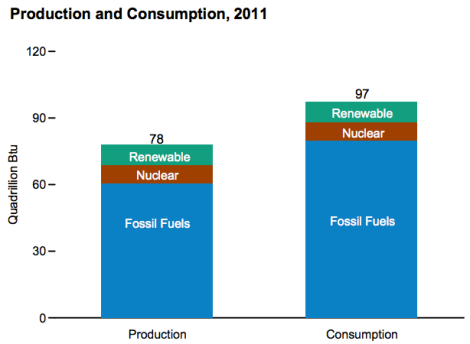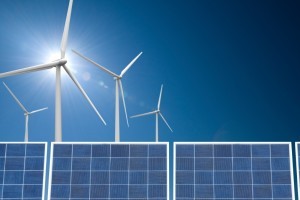The U.S. Energy Information Administration has what seems, at first blush, like bad news. Renewable energy consumption in the U.S. is expected to drop 2.6 percent this year. Here’s a graph of the dip. (Note: Both the 2012 and 2013 values are estimates.)
But buried in the data is the explanation: The drop is only due to hydropower “[beginning] to return to its long-term average.” Take out hydropower, and you have a 4.2 percent increase.
But there’s another caveat. The estimates are based on two assumptions.
The first is that the wind production tax credit (PTC) is renewed. This is a pretty big “if.” The tax credit, you may remember, is a bolster that allows the wind industry to compete in the rigged production game with fossil fuels. Fossil fuel companies are eager to see the PTC expire as it’s slated to at the end of the month, with one Koch-allied group pushing hard on the issue. If the PTC isn’t renewed, it’s safe to assume that the projections above will prove to be far too optimistic.
That said, there is some good wind news today. The New York Times notes that the government is holding another offshore auction next year — but this time, for wind energy. How much is generated by that auction — in terms of money and electricity — depends on what happens on Capitol Hill by the 31st.
The other caveat in those EIA projections is that solar continues to grow at about 30 percent a year. The solar industry (whose own PTC is expiring at the end of 2013) isn’t sitting on its hands. Over the weekend, the Times reported on how the industry is taking a page from Tupperware in selling its panels.
Environmentalists, government officials and sales representatives have been trying to get Americans to go solar for decades, with limited success. Despite the long push, solar power still represents less than 1 percent of electricity generated in the United States. Home solar panel setups, which typically run $25,000 or more, are considered by many consumers to be the province of the rich or idealistic.
So now solar companies are adhering to a path blazed by Tupperware decades ago, figuring that the best sales people are often enthusiastic customers willing to share their experiences with friends and neighbors — and perhaps earn a referral fee on any sales that result.
It’s a smart strategy: As we’ve noted before, peer pressure shows a demonstrable effect on solar panel adoption.
And, finally, some context. Here’s the breakdown of energy consumption between renewables, nuclear, and fossil fuels.

A 4 percent increase in renewable consumption is better than a decrease. But it will take a whole lot of solar-ware parties before we’re actually making a real dent in our greenhouse gas emissions.




